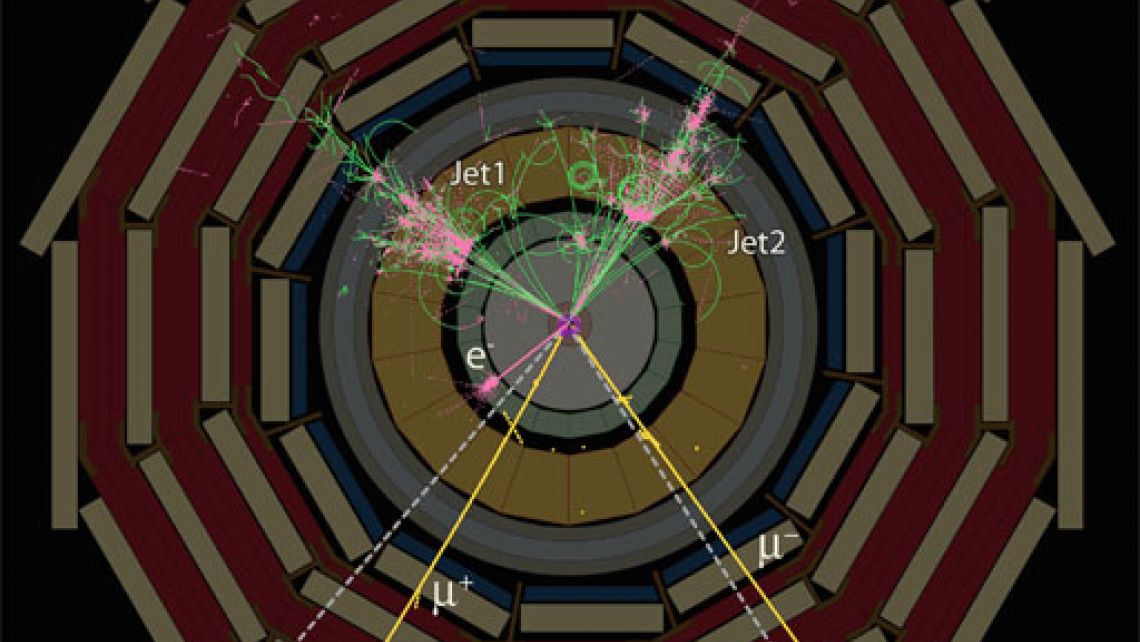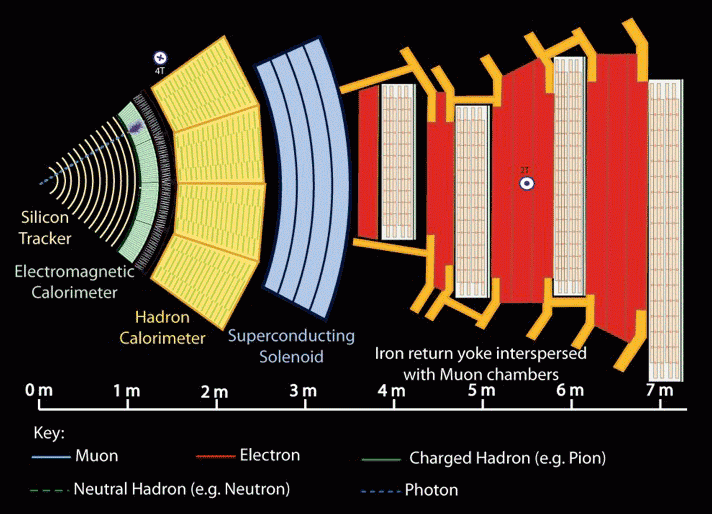How CMS detects particles
How CMS detects particles lucasEach particle that emerges from an LHC collision is like a piece of a puzzle, with some of these pieces breaking up further as they travel away from the collision. Each leaves a trace in the detector and CMS’s job is to gather up information about every one - perhaps 20, 100 or even 1000 puzzle tracks - so that physicists can put the jigsaw back together and see the full picture of what happened at the heart of the collision.

This event shows the production of a supersymmetric particle. The decay of the particle is such that every single layer of CMS is needed to detect the full range of emerging particles: electrons, muons, neutrinos and jets, produced by quarks.
To do this, CMS consists of layers of detector material that exploit the different properties of particles to catch and measure the energy or momentum of each one. New particles discovered in CMS will be typically unstable and rapidly transform into a cascade of lighter, more stable and better-understood particles.

NOTE: A Powerpoint version of the above slice animation can be found here.
A particle emerging from the collision and travelling outwards will first encounter the tracking system, made of silicon pixels and silicon strip detectors. These accurately measure the positions of passing charged particles allowing physicists to reconstruct their tracks. Charged particles follow spiralling paths in the CMS magnetic field and the curvature of their paths reveal their momenta.
The energies of the particles will be measured in the next layer of the detector, the so-called calorimeters. Electrons, photons and jets (sprays of particles produced by quarks) will all be stopped by the calorimeters, allowing their energy to be measured.
The first calorimeter layer is designed to measure the energies of electrons and photons with great precision. Since these particles interact electromagnetically, it is called an electromagnetic calorimeter (ECAL).
Particles that interact by the strong force, hadrons, deposit most of their energy in the next layer, the hadronic calorimeter (HCAL). The only known particles to penetrate beyond the HCAL are muons and weakly interacting particles such as neutrinos. Muons are charged particles, which are then tracked further in dedicated muon chamber detectors. Their momenta are also measured from the bending of paths in the CMS magnetic field. Neutrinos, however, are neutral and since they hardly interact at all they will escape detection. Their presence can nevertheless be inferred. By adding up the momenta of all the detected particles, and assigning the missing momentum to the neutrinos, CMS physicists will be able to tell where these particles were.
Particles travelling through CMS thus leave behind characteristic patterns, or ‘signatures’, in the different layers, allowing them to be identified (see figure). The data is passed from CERN to centres around the world where analysts then reconstruct the “event” and the presence of any new particles can be inferred.